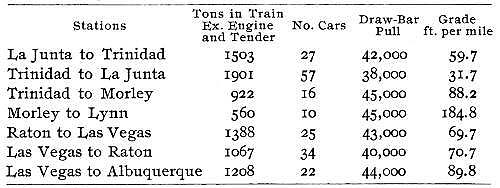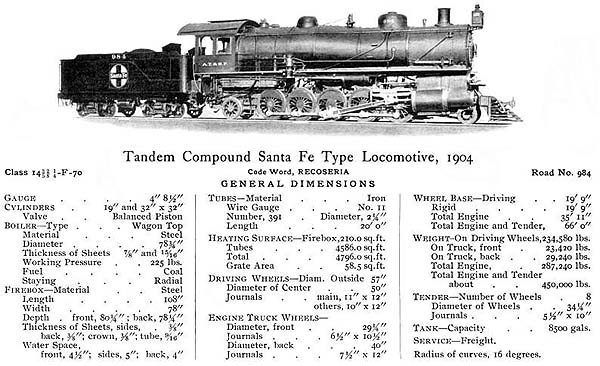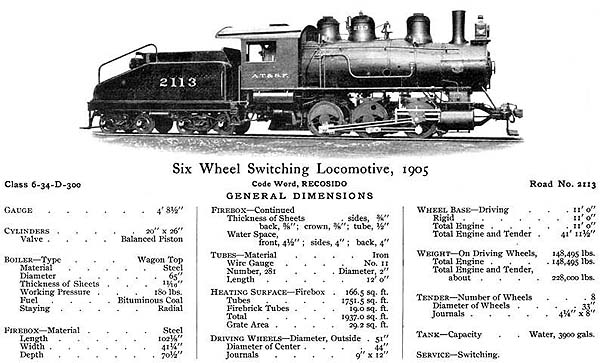|
The heavy Santa Fe type locomotive illustrated on page 21 (above), is one of 141 built since 1903. The cylinders of these engines are similar to those of the Decapod locomotive previously mentioned. The addition of the trailing wheels gives them better curving qualities, especially when running backward down grades. These engines, when introduced, were the heaviest in the world. A large number are at work on the western divisions of the system, and are using oil as fuel. A similar locomotive, having single-expansion cylinders twenty-four inches in diameter, was built in 1904; but those since constructed have all, with one exception, been fitted with tandem compound cylinders. The exception referred to is a locomotive built in 1905, which is equipped with a smokebox superheater and single-expansion cylinders thirty-two inches in diameter; the boiler pressure being 140 pounds. This engine was constructed for experimental purposes. A series of tests on the hauling power of the Santa Fe locomotives has recently been carried out, the draw-bar pull being measured by a dynamometer car. The following table gives data secured on the New Mexico Division. The tonnage behind the tender, number of cars in the train, draw-bar pull and grade in feet per mile are recorded; also the stations between which readings were taken.

With the starting valve open, the dynamometer registered as high as 71,000 pounds draw-bar pull. This was maintained however, for only brief periods of time. Thirty-nine heavy six-coupled switching engines have been built during the past year, and are illustrated on page 27 (below). These engines are representative of the latest practice for this class of service. The principal dimensions are presented with the illustration.
In building engines of various types for the same road it is of great advantage to the builder as well as the railway company to have the detail parts as far as possible interchangeable. In the locomotives for the Santa Fe System, not only are the like parts of each class accurately interchangeable, but the various classes show a marked similarity in design and many parts are interchangeable throughout several classes. |









